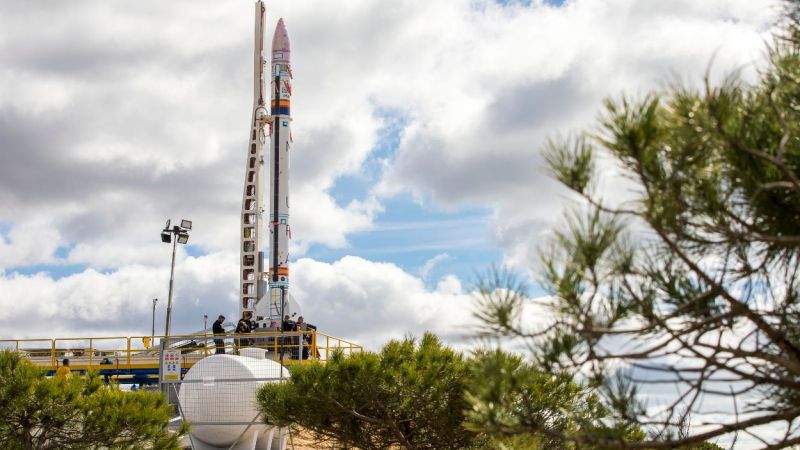The countdown has already begun. Spain finalizes preparations for the miura 1 launch: he first space rocket ‘made in Spain’ and the first european vehicle of this type designed to be reusable. The launch of this project, scheduled for this Wednesday between 5.30 and 10 in the morning, supposes a turning point for the Spanish aerospace industry. Above all because, according to its promoters, it will be the first time in history that Spain will have a own vehicle to travel to space. «This could be the beginning of a new era,» they argue from PLD spacethe company in charge of this project, while the last preparations are finished before the inaugural takeoff.
Right now there are only nine countries with direct access to space. After the release of Miura 1, Spain became the tenth state capable of traveling up to the stratosphere. The space rocket has been designed to take off, rise to more than 150 kilometers of altitude and then land on the surface of the sea safe and sound. On this tour, which lasts about 12 minutes, the vehicle will be able to transport up to 100 kilograms of materials into space to conduct scientific experiments in microgravity conditions.
When will the mission take off?
The Spanish rocket will take off from the El Arenosillo space base (Huelva). The space vehicle, 12 meters high and one in diameter, was transported to the Huelva launch pad on March 11. At this time, while the finalization of the preparations for takeoff, all eyes are focused on the weather forecasts. If the forecasts go as planned, the mission will take off this Wednesday between 5.30 and 10 in the morning.
⏰ Tick-tock. Finalizing the details of the first MIURA 1 flight unit before its next departure to the Huelva launch base.
⏰ Tick-tock. We are working on the last details of the first MIURA 1 flight unit before its next departure to the launch base in Huelva. pic.twitter.com/S2VKoVEwDI
— PLD Space (@PLD_Space) March 5, 2023
At times, as explained by the company, the technical teams of the mission are focused on finalize preparations for takeoff. This phase is experienced with the usual frenzy of the countdown but, at the same time, with the certainty that «everything is going according to plan«. If all goes well, Miura 1 will take flight in the coming days and, by doing so, it will enter the history books. «We have never seen before in Spain a rocket prepared for launch into space. We have never achieved this before milestone with 100% Spanish technology«, said Diana Morant, Minister of Science, after the official inauguration of the countdown to takeoff.
«We have never seen a rocket prepared for launch into space in Spain before»
Diana Morant, Minister of Science
Why is this rocket important?
The takeoff of the Spanish rocket promises to be something revolutionary. As explained by scientists Francisco José Torcal Milla and Santiago Forcada Pardo in an analysis published in ‘The Conversation’, the takeoff of Miura 1 will be a milestone for the entire European aerospace industry. So far, since the vast majority of space launchers are large, smaller projects they took a long time to reach orbit. «With Miura, the waiting time for these types of small satellites it will be reduced and, furthermore, it will be assumable for modest companies and organizations with smaller budgets«, say the experts.
«With Miura, the waiting time of this type of small satellites will be reduced»
Spain has been pulling large space launchers for years to put its missions into orbit. In 2017, for example, the first Spanish spy satellite was launched into orbit with the US company’s Falcon Heavy rocket spacex. More recently, the Catalan nanosatellites ‘Enxaneta’ and ‘Menut’ crossed the skies aboard the russian soyuz rocket. In both cases, the projects spent months on ‘stand by’ waiting for said launchers to be charged enough to amortize takeoff. After the official takeoff of Miura 1, the new Spanish rocket This type of project will have it easier to take off.
Why is it called that?
Related news
The first Spanish space rocket take his name Delaware the famous Miura bull farm. According to Torres and Verdú, the founders of PLD Space and the main ideologues of this aerospace vehicle, it is a reference to the ‘might’ of these animals and, in turn, recalls one of the best-known symbols of Spain. Previously, the first prototypes of this rocket were baptized as Arion (referring to the horse from Greek mythology that, due to its power, was even capable of crossing the waters) but, finally, the name of the project had to be changed to avoid confusion with Ariane rockets of the European Space Agency. «We stuck with the Miura name because it reflects strength, courage and energy«, they explain from the company.
«We stayed with the name of Miura because it reflects strength, courage and energy»
How the story began / how the story goes. @PLD_Space pic.twitter.com/HK92wB0YFf
— Raúl Torres🇪🇸 (@RaulTorresPLD) March 13, 2023
The story of the first Spanish space rocket begins, like any good story, with the dream of two young university students. In fact, the first sketches of this project emerged when Raúl Torres and Raúl Verdú, the founders of PLD Space, were still finishing their respective university degrees. At that time, at only 23 years of age, Torres and Verdú managed to outline the idea of a reusable launcher completely designed and manufactured in Spain. Their dreams managed to take shape back in 2011, when they both rented a coworking space of just nine square meters to start lay the foundations of this space project that promises to go straight into the history books.

